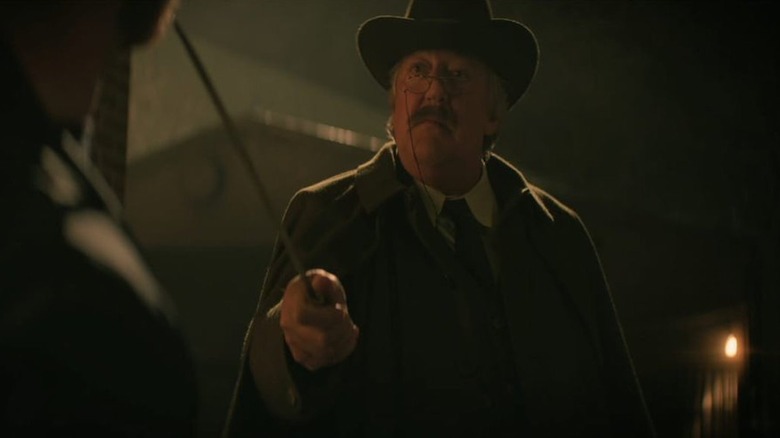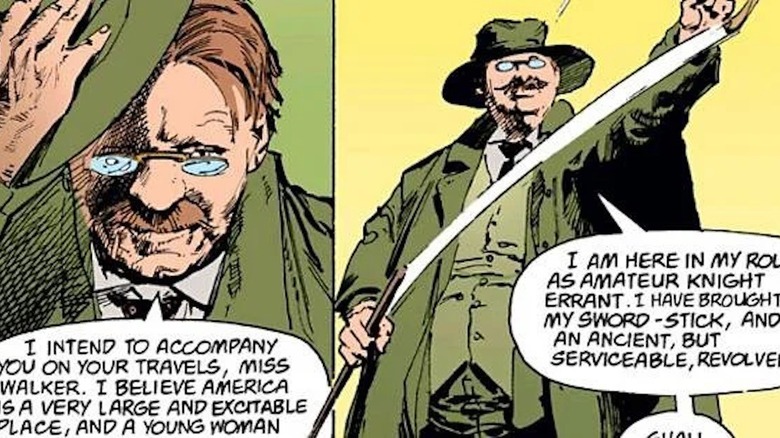The Real Person Who Inspired Stephen Fry's The Sandman Character
It's been a long, long time coming, but Neil Gaiman's deliriously inventive comic book fantasy, "The Sandman," has at last received a live-action adaptation. The 10-episode first season, which debuts August 5 on Netflix, has its work cut out for it. Not only must it satisfy the intensely dedicated fans of the book, who've been dreaming of Morpheus' richly beautiful odyssey leaping from the page since 1989, it also has to hook viewers who've never flipped through a single issue. This means Gaiman, working with the development team of David S. Goyer and Allan Heinberg, has to strike a very tricky balance between dreamy storytelling and lucid exposition. This is not an enviable challenge.
For newcomers, it might help to know the origins of some of the book's many characters. To that end, the great Stephen Fry, who plays Gilbert, the sentient, immensely likable manifestation of Fiddler's Green, spoke about the real-life inspiration behind his character.
The many paradoxes of Gilbert
/Film's own Danielle Ryan recently attended a press day for "The Sandman," and learned from Fry — a delightfully versatile artist who's performed, written and directed in a variety of media — that Gilbert is based on the equally multi-talented writer/philosopher/theolgian GK Chesterton. Gaiman was an admirer of Chesterton's when he was a young man, and Fry shares this affection. Using Chesterton as a reference point for his portrayal proved tremendously helpful for the actor. "It was rather pleasing," says Fry, "because, given who the character truly is in the background, if it had just been a Victorian gentleman, it would've been quite hard to hang any personality on it."
Fry then elaborated on the character and his purpose in the story:
"[K]nowing that Chesterton, this 'paradoxicalist' as he's often called, someone who sees the nature of things in an unusual way with a little twist usually... is that, hope is there because things are hopeless, and desire is there because we are undesirable and how everything is a reflection of its negative or whatever. It's a very Chestertonian way of looking at things. So I enjoyed that, even though it won't be picked up on, it's fun to inhabit something like that, I think."
Did you get all that? These are the kinds of heady concepts that get a thorough workout in Gaiman's series, and, in general, they're much easier to grasp when dramatized. You'll get to meet Gilbert and a whole lot of other bizarre folks when "The Sandman" makes its long-awaited debut this Friday.

